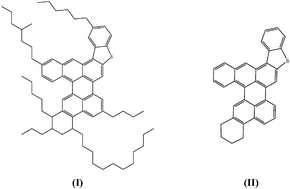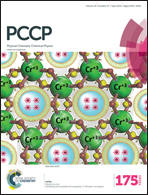Investigating molecular interactions and surface morphology of wax-doped asphaltenes
Abstract
The nature and origin of bee-like microstructures (bees) in asphalt binders and their impact on asphalt oxidation have been the subject of extensive discussions in recent years. While several studies refer to the bees as solely surface features, some others consider them to be bulk microcrystalline components that are formed due to co-precipitation of wax and asphaltene molecules. In this study, we use a rigorous theoretical and experimental approach to investigate the interplay of asphalt components (mainly asphaltene and wax) and their impact on bee formation. In the theoretical section, quantum-mechanical calculations using density functional theory (DFT) are used to evaluate the strength of interactions between asphaltene unit sheets in the presence and absence of a wax component, as well as the mutual interactions between asphaltene molecules (monomers and dimers) and paraffin wax. The results of this section reveal that paraffin waxes not only do not reinforce the interaction between the asphaltene unit sheets, they destabilize asphaltene assembly and dimerization. AIM (Atom in Molecules) analysis shows the destabilizing effect of wax on asphaltene assembly as a reduction in the number of cage and bond critical points between asphaltenes. This destabilization effect among interacting systems (asphaltene–asphaltene and wax–asphaltene) does not support the hypothesis that interaction between paraffin waxes and non-wax components, such as asphaltene, is responsible for their co-precipitation and bee formation. To further examine the effect of wax component on asphalt microstructure experimentally, we used atomic force microscopy (AFM) to study the surface morphology of an asphalt sample doped with 1% to 25% paraffin wax. In agreement with the conclusions drawn from the DFT approach, our experiments indicate that paraffin wax tends to crystallize separately and form lamellar paraffin wax crystal inclusions with 10 nm thickness. Moreover, the addition of 3% wax into asphalt results in a significant increase in surface roughness from 0.5 nm to 4.1 nm and an increase in bee wavelength from 651 nm to 1038 nm.



 Please wait while we load your content...
Please wait while we load your content...